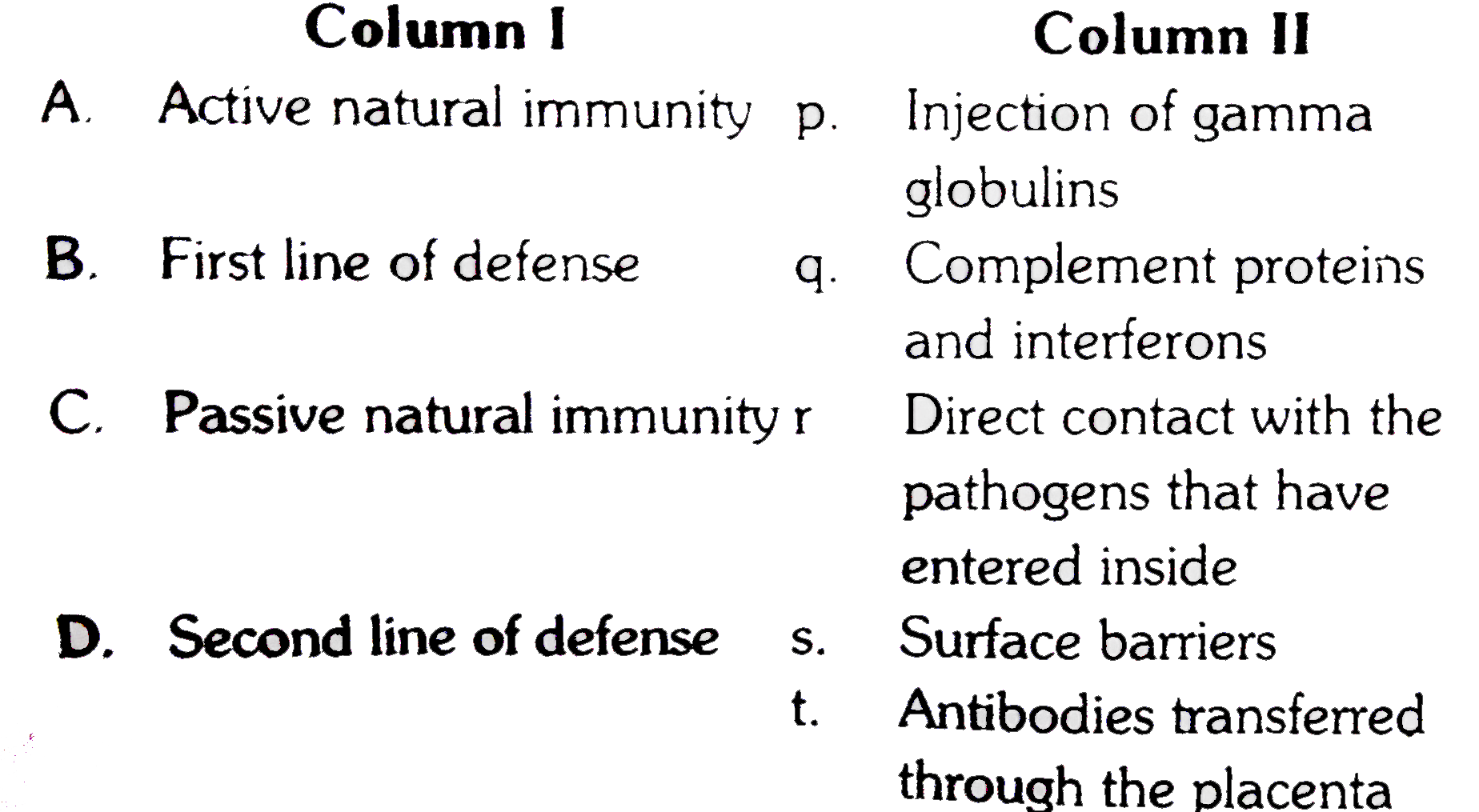Give list of components of ETS.
Step-by-Step Solution:
1. Understanding ETS:
- ETS stands for Electron Transport System, which is a series of complexes located in the inner mitochondrial membrane responsible for transferring electrons and generating ATP through oxidative phosphorylation.
2. Components of ETS:
- NADH Dehydrogenase (Complex I): This is the first component where electrons from NADH are transferred to the electron transport chain.
- Ubiquinone (Coenzyme Q): Ubiquinone receives electrons from both Complex I (NADH dehydrogenase) and Complex II (FADH2) and plays a crucial role in transferring electrons to Complex III.
- FADH2 (Complex II): This complex receives electrons from FADH2 and transfers them to Ubiquinone.
- Cytochrome bc1 (Complex III): This complex receives electrons from Ubiquinone and transfers them to cytochrome C.
- Cytochrome C: This is a mobile electron carrier that transfers electrons from Complex III to Complex IV.
- Cytochrome C Oxidase (Complex IV): This complex contains cytochrome a, cytochrome a3, and two copper centers. It is the final electron acceptor in the chain, where oxygen is reduced to form water.
- ATP Synthase: This enzyme uses the proton gradient created by the electron transport chain to synthesize ATP from ADP and inorganic phosphate.
3. Final Electron Acceptor:
- The final electron acceptor in the electron transport chain is oxygen, which combines with electrons and protons to form water.
4. Oxidative Phosphorylation:
- The entire process of ATP production through the electron transport chain and the use of the proton gradient is known as oxidative phosphorylation.
List of Components of ETS:
1. NADH Dehydrogenase (Complex I)
2. Ubiquinone (Coenzyme Q)
3. FADH2 (Complex II)
4. Cytochrome bc1 (Complex III)
5. Cytochrome C
6. Cytochrome C Oxidase (Complex IV)
7. ATP Synthase
---
- ETS stands for Electron Transport System, which is a series of complexes located in the inner mitochondrial membrane responsible for transferring electrons and generating ATP through oxidative phosphorylation.
- NADH Dehydrogenase (Complex I): This is the first component where electrons from NADH are transferred to the electron transport chain.
- Ubiquinone (Coenzyme Q): Ubiquinone receives electrons from both Complex I (NADH dehydrogenase) and Complex II (FADH2) and plays a crucial role in transferring electrons to Complex III.
- FADH2 (Complex II): This complex receives electrons from FADH2 and transfers them to Ubiquinone.
- Cytochrome bc1 (Complex III): This complex receives electrons from Ubiquinone and transfers them to cytochrome C.
- Cytochrome C: This is a mobile electron carrier that transfers electrons from Complex III to Complex IV.
- Cytochrome C Oxidase (Complex IV): This complex contains cytochrome a, cytochrome a3, and two copper centers. It is the final electron acceptor in the chain, where oxygen is reduced to form water.
- ATP Synthase: This enzyme uses the proton gradient created by the electron transport chain to synthesize ATP from ADP and inorganic phosphate.
- The final electron acceptor in the electron transport chain is oxygen, which combines with electrons and protons to form water.
- The entire process of ATP production through the electron transport chain and the use of the proton gradient is known as oxidative phosphorylation.
1. NADH Dehydrogenase (Complex I)
2. Ubiquinone (Coenzyme Q)
3. FADH2 (Complex II)
4. Cytochrome bc1 (Complex III)
5. Cytochrome C
6. Cytochrome C Oxidase (Complex IV)
7. ATP Synthase
Topper's Solved these Questions
- RESPIRATION IN PLANTS BOOK - MODERN PUBLICATIONCHAPTER - RESPIRATION IN PLANTS EXERCISE - REVISION EXERCISES (Long Answer Questions)
5 Videos
- RESPIRATION IN PLANTS BOOK - MODERN PUBLICATIONCHAPTER - RESPIRATION IN PLANTS EXERCISE - COMPETITON FILE OBJECTIVE TYPE QUESTIONS (A. MULTIPLE CHOICE QUESTIONS)
30 Videos
- RESPIRATION IN PLANTS BOOK - MODERN PUBLICATIONCHAPTER - RESPIRATION IN PLANTS EXERCISE - REVISION EXERCISES (Very Short Answer Questions)
16 Videos
- PLANT KINGDOM BOOK - MODERN PUBLICATIONCHAPTER - PLANT KINGDOM EXERCISE - Chapter Practice Test
16 Videos
- STRUCTURAL ORGANISATION IN ANIMALSBOOK - MODERN PUBLICATIONCHAPTER - STRUCTURAL ORGANISATION IN ANIMALSEXERCISE - CHAPTER PRACTICE TEST (Section -E)
2 Videos
Similar Questions
Knowledge Check
column I lists the components of boduy defense and column II lists the corresponding descriptions. Match the two columns. Choose the correct option from those given
 AA=s,B=r,C=t,D=qBA=r,B=s,C=q,D=tCA=r,B=s,C=t,D=qDA=t,B=r,C=q,D=p
AA=s,B=r,C=t,D=qBA=r,B=s,C=q,D=tCA=r,B=s,C=t,D=qDA=t,B=r,C=q,D=p
What is lymph ? Give its components.
View SolutionList two biotic components of a biosphere.
View SolutionList two biotic components of a biosphere.
View SolutionDescribe how biogas is generated from activated sludge. List the components of biogas.
View SolutionDescribes how biogas is generated from activated sludge. List the components of biogas.
View SolutionWhat are the components of a nucleotide ?
View SolutionList three components of a nucleotide .
View Solution
